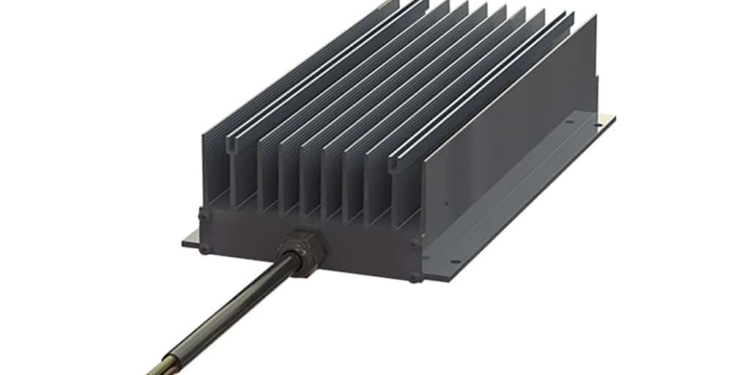Source: REO news
REO UK has brought high power brake resistors into the 21st century with its new REOHM series 155 braking resistors for industrial control cabinets. The product can deliver up to 3500 W of continuous power to drives with medium- and high-power frequency converters, with isolation voltages to 4.4 kV, in a compact design that helps the product overcome the common problems with electrical braking resistors.
The REOHM series 155 is designed to provide reliable performance in control cabinets while overcoming the traditional problems with braking resistors in industrial applications. The product’s small footprint and large power capacity make it an ideal option for heavy industrial sector applications, such as mining equipment, trains and large vehicles.
The resistors are rated up to IP66, providing complete protection against dust ingress and protecting the unit from powerful jets of water, making the product range suitable for more demanding environments. The range has also passed salt mist testing, making it suitable for offshore applications.
Historically, high power braking resistors would require a large unit housing that affect how it is integrated with the cabinet itself. The series 155 overcomes this with its compact design.
“Larger braking powers have usually been the domain of old-fashioned wire wound types,” explained Steve Hughes, managing director of REO UK. “These are relatively cheap to produce and are well understood in industry. However, they have several shortcomings when applied in more modern applications and environments. In particular, there have been three key risks: the wire can uncoil, the design of the unit housing has been open to ingress and the resistor can be prone to electromagnetic interference (EMI).
“The failure mode of a traditional wire wound resistor tends to be catastrophic, especially with units with little or no enamelling, and often results in an uncoiling of the wire. Often, the resistor will still have power on at this point, creating a live DC conductor that can damage the drive and blow fuses. And this is among the best-case scenarios.
“The nature of them being inherently open, much like old fashioned heater elements, means that they must be adequately housed and segregated from other sensitive parts of equipment, often on top of control cabinets. But this can lead to issues, especially if there is likely to be conductive or explosive dust or material in the air, as in a paper mill. “Likewise, units housed externally often require cabling that can unintentionally emit high frequency noise from the drive, which can manifest as distorted currents in the control cabinet and nearby electrical systems.
“With the development of the REOHM series 155, these problems can become a thing of the past for industrial businesses. The resistors come in an IP66-rated closed unit that prevents dust and airborne materials from entering the unit, and the cable connecting the unit to the drive is fully-screened to ensure that emissions are not an issue. Drawing from our expertise in delivering good power quality, this resistor is able to meet the emerging demands of an ever-developing industry.”
The 3500 W REOHM series 155 is the latest in a number of developments from the company to improve industrial braking resistor technology, following the successful testing of one of REO UK’s aluminium-clad braking resistor to EN 60068 and EN 60529 environmental standards.


































